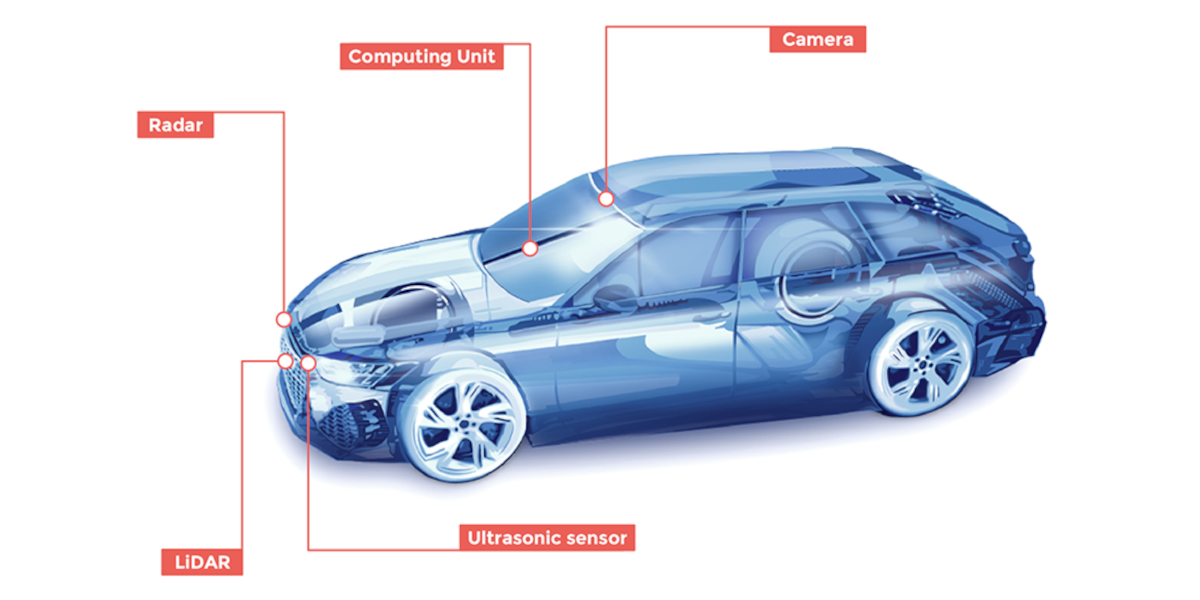Advanced driver assistance systems (ADAS) are becoming standard in the latest cars. These systems use sensors, cameras, and software to help drivers avoid accidents and improve their driving experience.
Some of the most common ADAS features include:
- Forward collision warning: This system alerts the driver if there is a risk of a collision with another vehicle.
- Automatic emergency braking: This system can automatically apply the brakes if the driver does not react to a collision warning.
- Lane departure warning: This system alerts the driver if they are about to drift out of their lane.
- Lane-keeping assist: This system can automatically steer the vehicle back into its lane if it starts to drift.
- Adaptive cruise control: This system automatically adjusts the vehicle’s speed to maintain a set distance from the car in front of it.
ADAS features are becoming standard in cars for several reasons. First, they can help to improve safety. According to the National Highway Traffic Safety Administration (NHTSA), ADAS features can reduce the risk of a fatal crash by up to 20%. Second, ADAS features can make driving more comfortable and convenient.
For example, adaptive cruise control can help to reduce driver fatigue on long road trips. Third, ADAS features can help to reduce fuel consumption. For instance, lane-keeping assistance can help drivers stay in their lane, reducing the need for steering input.
As ADAS technology develops, more features will likely become standard in cars. For example, some automakers are already developing systems that can automatically change lanes, park the car, and even drive the car autonomously on certain roads.

Here are some of the benefits of ADAS features:
- Reduced risk of accidents: ADAS features can help to reduce the risk of accidents by providing drivers with warnings and assistance. For example, a forward collision warning can alert drivers to potential collisions, and automatic emergency braking can automatically apply the brakes to prevent a crash.
- Improved driver comfort and convenience: ADAS features can help improve driver comfort and convenience by taking over some driving tasks. For example, adaptive cruise control can automatically maintain a set speed and distance from the car in front, and lane-keeping assist can automatically keep the car in its lane.
- Reduced fuel consumption: ADAS features can help to reduce fuel consumption by reducing driver stress and fatigue. For example, lane-keeping assistance can help drivers stay in their lane, reducing the need for steering input.
Here are some cars with ADAS features:
- Tesla Model 3: The Tesla Model 3 comes standard with a variety of ADAS features, including forward collision warning, automatic emergency braking, lane departure warning, and lane keeping assist.
- Toyota Camry: The Toyota Camry has a few ADAS features, such as a forward collision warning and automatic emergency braking. Blind-spot monitoring and rear cross-traffic alert are available as options.
- Honda Accord: The Honda Accord comes standard with a few ADAS features, such as forward collision warning and automatic emergency braking. Lane departure warning and lane keeping assist are available as options.
- Hyundai Sonata: The Hyundai Sonata comes standard with a few ADAS features, such as forward collision warning and automatic emergency braking. Blind-spot monitoring and rear cross-traffic alert are available as options.
- Kia Optima: The Kia Optima comes standard with a few ADAS features, such as forward collision warning and automatic emergency braking. Blind-spot monitoring and rear cross-traffic alert are available as options.
Four main types of ADAS sensors are used today: cameras, radar, lidar, and ultrasonic sensors.
- Cameras: Cameras are the most common type of ADAS sensor. They are used for various features, such as lane departure warning, blind spot monitoring, and pedestrian detection.
- Radar: Radar sensors use radio waves to measure the distance, speed, and direction of objects around the vehicle. They are used for adaptive cruise control, automatic emergency braking, and lane-keeping assist.
- Lidar: Lidar sensors use light to measure the distance, speed, and direction of objects around the vehicle. They are more expensive than radar sensors but offer better accuracy and range. Lidar is used for features such as self-driving cars.
- Ultrasonic sensors: Ultrasonic sensors use sound waves to measure the distance to objects around the vehicle. They are used for features such as parking assist and blind spot monitoring.
ADAS sensors work together to give drivers a complete view of the road and surrounding environment. This can help drivers to avoid accidents and make safer driving decisions.
These are just a few examples of cars with ADAS features. Many other cars on the market offer these features as standard or optional equipment.
Conclusion
Overall, ADAS features are becoming standard in cars because they can help to improve safety, comfort, convenience, and fuel efficiency.
ET Auto and Yole Group



































